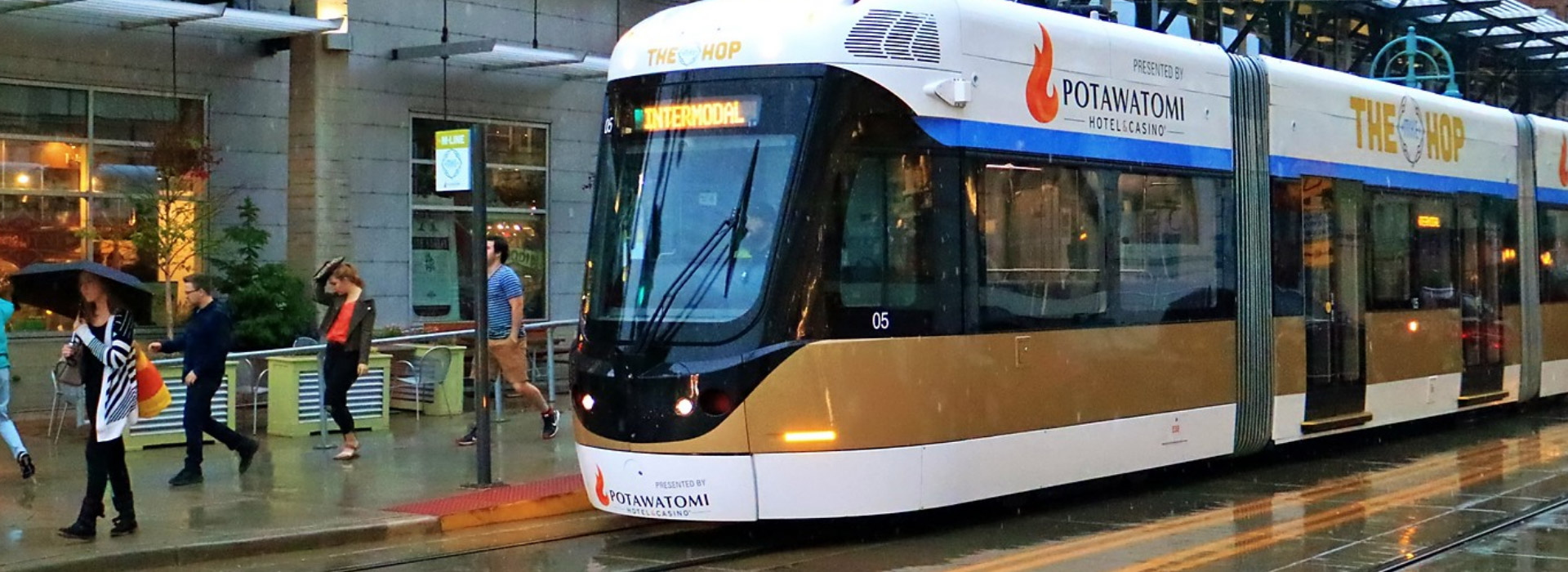
Milwaukee’s streetcar was always a massive boondoggle but, as Dan O’Donnell writes, its problems are now worse than ever.
June 11, 2021
Perspective by Dan O’Donnell
We’ve all been there: We know the movie we’re watching is terrible. It’s barely watchable, in fact. But we’re an hour in and paid $28.50 for two tickets plus another $25 for popcorn and sodas. At this point, we might as well stick it out, right?
Wrong. It’s beautiful outside and if we leave now we can watch the sunset from the bar patio down the street. Besides, why would we want to keep watching a movie we hate?
The answer lies in what’s known as the “sunk cost fallacy”—our tendency to invest more of our time and money into things that we have already invested our time and money. The price of the movie tickets and the hour we spent in the theater are sunk costs, meaning that they cannot be recovered. In order to justify this investment to ourselves, we invest even more in a vain attempt at salvaging it.
This, on a much larger scale, is what the City of Milwaukee has been doing with its streetcar system for years, and the terrible film it’s decided to keep watching is a horror movie.
The Hop, a $128 million boondoggle paid for with a combination of federal money and tax incremental financing, opened for business in late 2018. The word “business,” however, shouldn’t be taken literally. Thanks to a sponsorship deal with Potawatomi Hotel and Casino, rides were free for the first year.
Even then, ridership waned once the novelty wore off. After the first year, Milwaukee Mayor Tom Barrett and the Hop’s other supporters knew that the original plan to charge $1 per ride would be a nonstarter as Milwaukeeans would be unlikely to sink even such a minimal cost into a streetcar that only travels in a two-mile loop.
Now the public isn’t even willing to sink $0 into a ride on the Hop, as ridership has plummeted to just 450 rides per day.
“We wanted to see what it looked like for ourselves,” reported FOX 6 Milwaukee’s Bryan Polcyn, “so on April 27 — a partly cloudy Tuesday with a high of 70 degrees, we watched a single streetcar platform for eight hours, 9 a.m. to 5 p.m. In that time, 48 trains passed by the Cathedral Square platform, but just 22 people got on board. Thirty-seven of those trains pulled up and pulled away without gaining a single new rider.”
While the COVID-19 pandemic certainly played a role in the steep decline in ridership over the past year, the Hop averaged 495 riders per day in December, but that number fell all the way to 450 in April, when the weather was obviously much nicer and COVID vaccines were widely available, making people who might have been otherwise reluctant more likely to venture back out into society.
There was, in other words, no reason for a decline in ridership other than the fact that the public simply doesn’t want to ride the Hop. Consider this: Polcyn reports that while bus ridership fell by 50% during the pandemic, the streetcar’s ridership dropped 85%.
“While streetcars in other cities, like Kansas City, Tuscon, Cincinnati and Oklahoma City have already begun to see a rebound in ridership this spring, the Milwaukee streetcar has not,” Polcyn added.
The State of Wisconsin and its communities are set to receive a staggering $20 billion, with $400 million earmarked for transit projects alone. Milwaukee itself will get $405 million. Would it not make sense to use at least some of that to pay back the federal government and be done with a streetcar that does not have a prayer of ever paying for itself?
Making matters worse, Milwaukee is paying an estimated $4.5 million to operate the Hop this year. $1.3 million of that is covered by sponsorship and advertising deals, but with no ticket sales to offset the operating costs, the city faces a $3.1 million shortfall.
That has prompted calls to either suspend service or give up on the streetcar altogether, but would prove costly.
“When we decided to make this improvement we did it in significant part with federal money and as part of that we entered into kind of a contractual agreement or project agreement with the federal government,” Milwaukee Department of Public Works Commissioner Jeff Polenske told Urban Milwaukee last fall. “We do have an obligation to operate this for the life of the improvement.”
Since Milwaukee accepted $69.1 million in federal money, it is obligated to keep the Hop running for its “useful life”—roughly 25 years—or else it will have to pay back the federal government in full.
While this is a massive payment, it actually pales in comparison to the cost of running the Hop for the next 25 years. Using the $3.1 million funding gap as a baseline and factoring a 2.5% rate of inflation per year, the City of Milwaukee would have to cough up a minimum of $111.5 million to keep running the streetcar system for the duration of its useful life.
In the highly likely event that Milwaukee is unable to sell advertising and sponsorship on something that nobody rides, it would have to pay the full operational cost once the Potawatomi money runs out in 2028. Once again conservatively assuming a 2.5% annual rate of inflation, that comes to nearly $150 million in total operating costs, an average of about $6 million per year every year for the next 25 years.
Would it be wiser to simply pay less than half of that up front to be done with this boondoggle altogether? Of course it would, especially now that municipalities like Milwaukee are flush with COVID-19 relief money.
The State of Wisconsin and its communities are set to receive a staggering $20 billion, with $400 million earmarked for transit projects alone. Milwaukee itself will get $405 million. Would it not make sense to use at least some of that to pay back the federal government and be done with a streetcar that does not have a prayer of ever paying for itself?
It does, but when it comes to his pet project, Mayor Barrett never has made much sense. He wants to use that federal money to expand the streetcar, claiming that people will only start to ride it once it expands into more neighborhoods.
While that may be true, the question is whether they will pay for their rides. If no one is riding the Hop while it’s free, why would anyone ride it when they have to pay? And even if they do pay, a $1 fee will only cover a tiny fraction of the annual operational costs.
Using the Hop’s original (and overly sunny) forecast of 1,800 rides per day, $1 per ride would only bring the city $657,000 in annual revenue to cover $4.5 million in costs. Milwaukee will have no choice but to dip into its parking revenue or find another way to pay to keep the Hop running.
The logical thing to do would be to stop running the Hop, try to cut a deal with the federal government to minimize the amount that needs to be paid back, and use as much COVID relief money as possible to pay it back.
The sunk cost fallacy will almost certainly prevent this, though, as Milwaukee will invariably continue to throw money into the streetcar in a vain attempt at making Mayor Barrett’s vanity project finally work.
Rather than cut its losses, Milwaukee is going to stay on this train until it crashes; all the while taking taxpayers for a ride.





